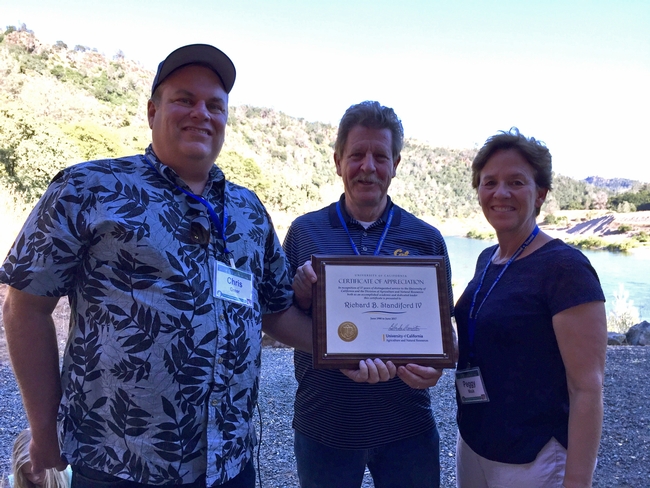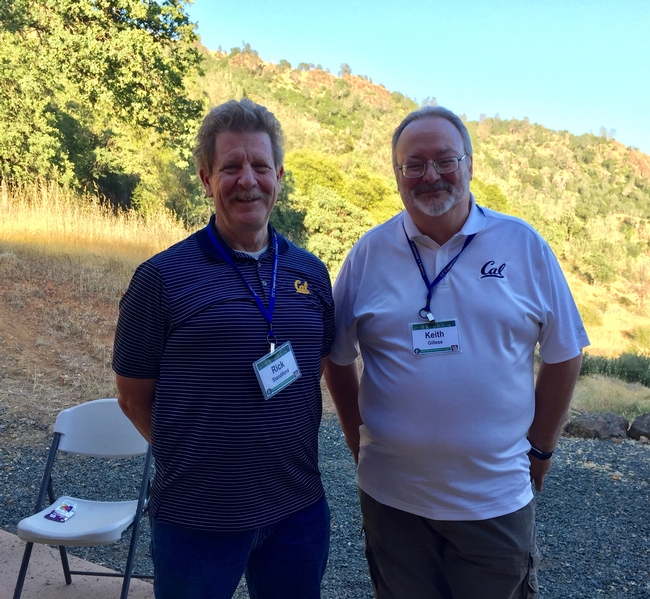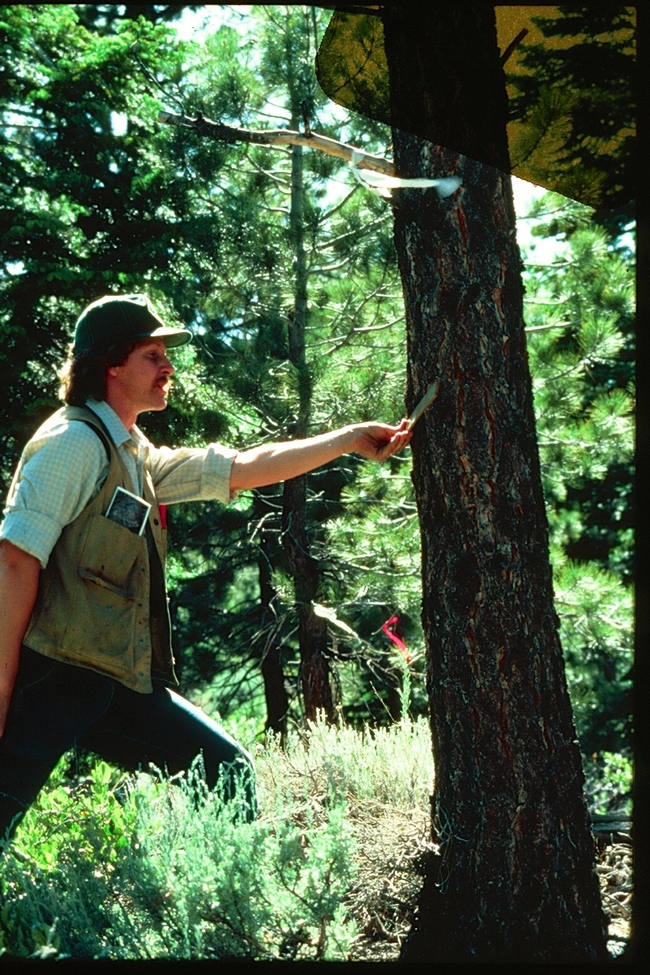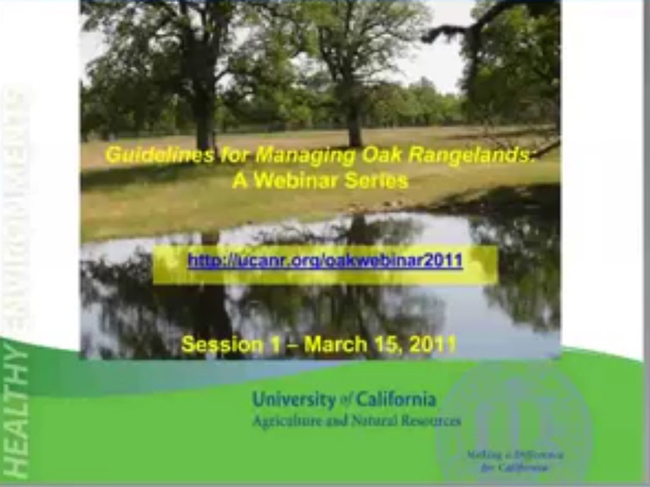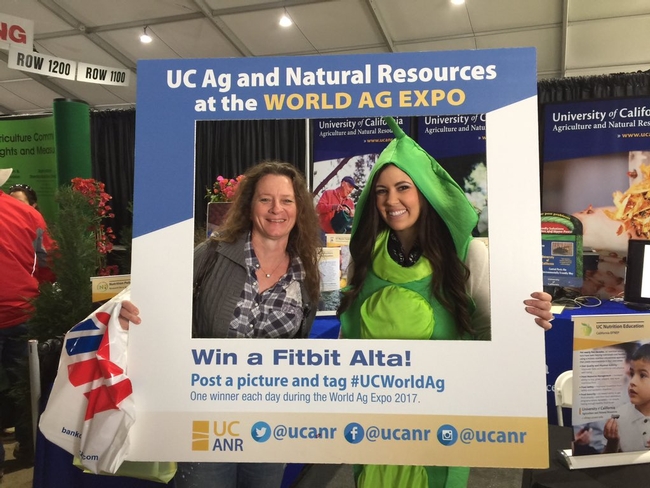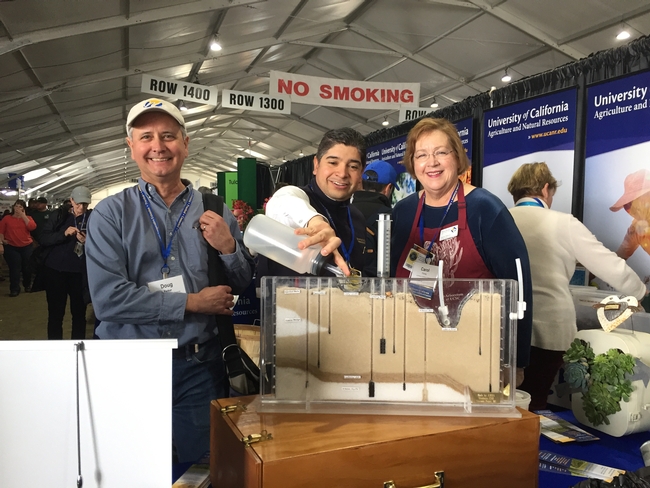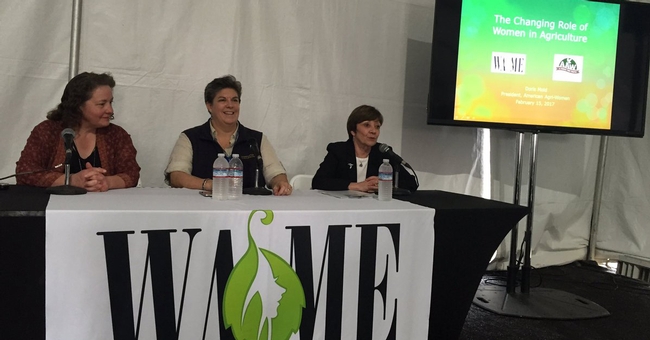Posts Tagged: Maggi Kelly
Standiford retires from 37-year UC ANR career
Wrapping up a remarkable 37-year career with UC ANR, Richard B. Standiford IV, UC Cooperative Extension forest management specialist at UC Berkeley, will retire June 30.
In addition to being a highly regarded forestry expert, Standiford served as UC ANR's associate vice president from 2005 to 2009, and provided stability for the division as acting vice president during the 11-month transition from Reg Gomes stepping down to retire until Daniel Dooley succeeded him as vice president in 2008.
“There are a select few individuals who both excel at research, teaching, service and outreach and can lead and motivate others to try to do the same. Rick belongs to this rarest subspecies of academic,” said Keith Gilless, dean of the College of Natural Resources at UC Berkeley, who has worked with Standiford for 35 years.
In 1980, after working two years as a research and extension forester at Purdue University, Standiford joined UC Cooperative Extension at UC Berkeley. The New Jersey native developed a research and extension program focused on sound management of California's forests, rangelands and other natural resources.
Standiford “personifies all that is best about Cooperative Extension,” said Maggi Kelly, director of the UC ANR Statewide Informatics and Geographic Information Systems Program, professor and Cooperative Extension specialist in the Department of Environmental Sciences, Policy & Management at UC Berkeley.
His legacy in Cooperative Extension continued to grow as associate vice president of ANR, says Peggy Mauk, former director for Central Coast and South Region.
“Rick empowered people, empowered regional directors and county directors to implement programs for the betterment of California,” Mauk said. “Rick had the ability to bridge the gap between administrative concepts and regional (county) implementation. He wanted to know how higher level decisions would impact ANR's county-based personnel and programs and then adjust for those impacts. Above all, Rick valued people and positions, and supported the ANR mission.”
He also has provided leadership for county Cooperative Extension advisors developing programs in forestry and conservation of oak woodlands.
“Rick has a tremendous ability to pull people together,” said Yana Valachovic, UCCE director and forest advisor for Humboldt and Del Norte counties, noting his leadership in getting people to work together to contain sudden oak death disease. “It takes passion, vision and an ability to communicate effectively.”
While tackling the emerging forest disease, Standiford also devoted time to mentoring young scientists.
“Early in 2000, Rick bounced into my office with the news that he had found emergency funds to study the disease, and had assembled a team of pathologists, ecologists, arborists, homeowners and forest managers to attack the problem,” said Kelly, a remote-sensing expert. “Rick asked if I would be able to use the money to fly to Marin County and develop critical baseline maps of the nascent disease. I was, and I did, and that generosity and foresight launched my applied research and extension program at Berkeley.”
“The disease was subsequently named Sudden Oak Death, and in 2015 ANR was been given a nationwide award in extension for its timely, quality, impactful multidisciplinary approach to the disease,” Kelly said, “and it all started with Rick.”
Standiford said working with people was the part of his career he enjoyed most. He recalled driving with UCCE colleagues to Mariposa County to deliver a workshop on managing oaks.
“The sun was setting, it's pretty dark, pretty desolate and we're wondering, ‘Is anybody going to be at the workshop?'” Standiford said. “At the grange hall in Catheys Valley, there's a ton of pickup trucks and cars. Inside, everybody is excited that the university has shown up to help figure out how to manage their trees. That's what my job has been about. It was always a lot of fun.”
An early adopter of technology, Standiford has used webinars to teach oak woodland management from a distance. While acknowledging the convenience of virtual meetings, he said, “I hope we don't lose sight of the value of personal contact.”
From 1985 to 1987, Standiford served as ANR program director for natural resources, leading efforts in forestry, wood products, wildlife and range management.
From 1988 to 1999, Standiford led collaboration among UC, the California Department of Forestry and Fire Protection, and the California Department of Fish and Game for the ANR statewide Integrated Hardwood Range Management Program, which was established in 1986 by the California Legislature to address poor oak regeneration and ongoing woodland losses. The program continued for 23 years until its budget was cut in 2009.
At UC Berkeley, he coordinated all Cooperative Extension activities in the Department of Forestry and Resource Management from 1989 to 1993, served as associate dean for forestry and director of the Center for Forestry from 1998 to 2002 in the College of Natural Resources, and oversaw the College's capital projects program, space planning and research infrastructure as associate dean for forestry and capital projects from 2002 to 2004.
In retirement, Standiford plans to teach at the UC forestry camp and remain active with the Society of American Foresters. He also plans to travel with his wife, Judy, and spend time coaching and camping with his five grandchildren
“I have been blessed with the most wonderful job in the world,” Standiford said. “The best part was the honor of working with such wonderful people on campus, in the counties, and the wide group of landowners and managers who taught me so much.”
ANR participates in World Ag Expo
The 50th World Agricultural Expo was held Feb. 14-16, 2017, in Tulare. The three-day show was attended by 105,780 people representing 43 states and 71 countries, according to its website. UC ANR participated by hosting a newsmakers event for journalists and sponsoring four booths displaying information about the division's array of research and programs.
At the booths, 4-H members and UC ANR scientists greeted visitors and answered questions. Visitors were invited to take a picture with a UC ANR frame and post it to social media with the hashtag #UCWorldAg to be entered in a contest to win a FitBit.
On the first day of the show, reporters were invited to meet UC ANR scientists, who gave 3-minute descriptions of their research. Rose Hayden-Smith, editor of the UC Food Observer blog, was the emcee. The speakers were as follows:
- Mary Lu Arpaia, UC Cooperative Extension horticulturist, UC Riverside, based at the Kearney REC in Parlier,avocadoes
- Khaled Bali, UCCE irrigation water management specialist, based at KREC, automated irrigation systems
- Peggy Lemaux, UCCE plant genetics specialist, UC Berkeley, and Jeff Dahlberg, KREC director and UCCE specialist, plant breeding and genetics, $12.3 million study on sorghum
- Lupita Fábregas, UCCE 4-H Youth Development advisor and assistant director for diversity and expansion, outreach to Latino communities
- Maggi Kelly, UCCE specialist and director of the UC Statewide Informatics and Geographic Information Systems program, UC Berkeley, research using drones
- Doug Parker, director, UC California Institute for Water Resources, drought
- Alireza Pourreza, UCCE agricultural engineering advisor, based at KREC, early detection of huanglongbing disease in citrus
- Leslie Roche, UCCE rangeland management specialist, UC Davis, drought management on rangeland
- Samuel Sandoval Solis, UCCE specialist in water resources, UC Davis, groundwater management
UC ANR and UC Food Observer live-streamed the talks on Facebook Live and on Twitter via Periscope. UC Food Observer's Facebook video of the event has been viewed nearly 5,000 times.
On the second day of the expo, a seminar on the changing role of women in agriculture was presented by VP Glenda Humiston, CDFA secretary Karen Ross and president of American AgriWomen Doris Mold. The speakers noted that women have always been involved in agriculture, but cultural bias often left them feeling that their role was inferior to the roles of male family members. The USDA's next census of agriculture will have questions designed to count women as industry workers even if they might consider their husbands or fathers to be the primary operators of the farm.
Humiston told the audience there are many career opportunities for women in agriculture, not just on the farm. She encouraged the young women and girls in the audience to look for opportunities in allied industries. For career advancement, women can join professional organizations and serve on committees, take advantage of training programs and run for leadership positions.
The panelists suggested that women also identify mentors — both men and women — who can help steer young professional women into successful agricultural careers.

